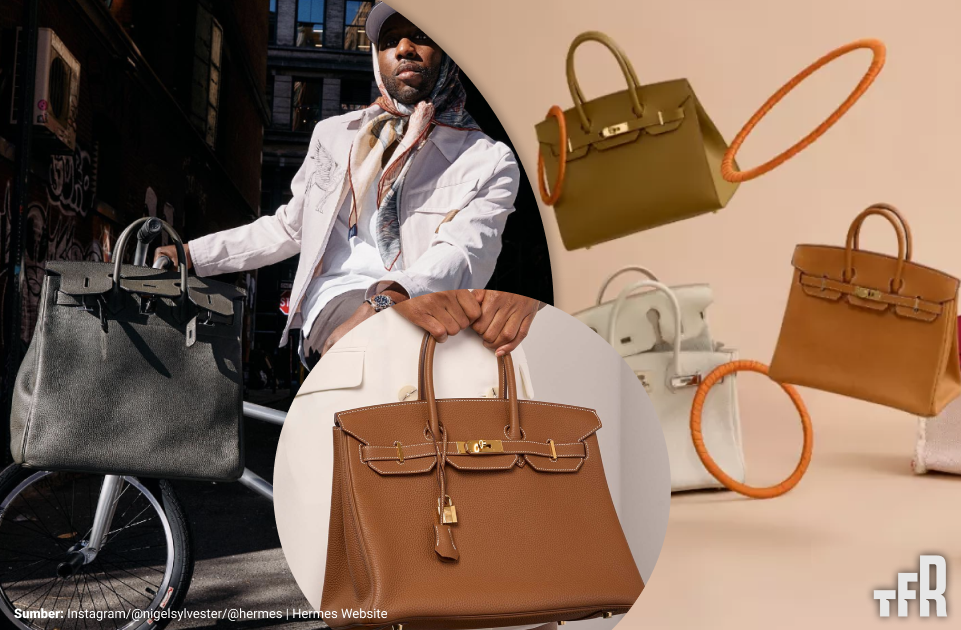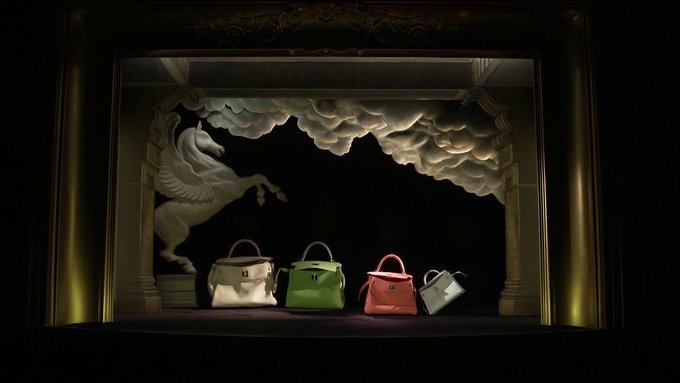The insiders’ guide to Hermés
Written by Kezia Pribadi | Read in Indonesian
Hermés; the name, the orange box, and the difficult path to actually acquiring a bag. The brand has become synonymous with peak luxury, yet its origins and history are less known. Thus, TFR aims to look back on what made the brand what it is today, and most especially the insiders’ guide to Hermés.
Thierry Hermès first established his then French leather shop as a harness workshop in Paris, dedicated to serving European noblemen. His shop created high-quality wrought harnesses and bridles for the carriage trade.
When his son, Charles Emile, took over the management, he expanded the product lines into saddlery and started selling them to retail stores. Circa 1900, the brand introduced its first leather bag known as the Haut à Courroies bag, designed for carrying saddles, riding boots and trims.
Throughout the 1920s, the brand added products such as accessories, home goods and jewellery. During the 1930s, Hermès introduced its Sac a dépêches, which became a foundational style for the handbag sector and was later renamed the Kelly in honour of Princess Grace of Monaco.
Source: Twitter @Hermes_Paris
By 1984, Jean Louis Dumas, the CEO at the time, met actress Jane Birkin on a flight. He then invited her to France where they co-designed what is known as the Birkin bag. It has since become the brand’s most celebrated and sought-after item.
The epitome of luxury
Scarcity, craftsmanship and timeless design are not only the driving force of the brand. Hermès is also known for its high-end pricing. Even entry-price models sit a notch above rivals like Chanel. The Birkin and Kelly, particularly, are situated at the top of the luxury pyramid.
The Birkin 25 starts at €7,850 in Epsom calfskin and many more options with other sizes, exotic materials and designs, enabling the price to climb further. Ostrich and lizard skins are at least double the price. A mini Kelly in crocodile costs €26,200.
The brand stated that its prices are based on input costs and desired profit margins using long-standing formulas. The brand does not revise prices as a function of marketing concerns. Still, the price of the bags is well above rival brands, and that in itself is inadvertently a marketing function, which increases the brand’s desirability.
When it comes to marketing, less is more for Hermès
Unlike other megabrands that employ the glitziest advertising campaigns, red carpet moments and influencer partnerships, Hermés takes an unconventional route and instead subscribes to the notion of promoting a hierarchy of products in their communications. They use themes such as “Une Odyssée” to create a tasteful but also a playful campaign. This strategy also unifies their products from across 16 product divisions known as métiers.
Hermès is all about community; they do not ever conform to celebrity marketing. This way, the brand has been able to differentiate itself and limit spending on promotions, whereas other brands are locked in the celebrity/influencer-driven buzz.
While most brands have control over their narrative, Hermés tends to let its insatiable community speak for them. They have historically been known to limit information on prices and availability for their most sought-after bags such as the Birkin and Kelly.
However, buyers can find answers and questions about the bags through other sources online. The brand discourages this activity, but online chat rooms, social media, as well as specialised press for handbag collectors seem to have somewhat of an insider info; from practical information such as pricing to miscellaneous information such as seasonal colours and exotic skins. Collectors and buyers share their “battle stories” and swap tips and views on leather finishes and other variations of their bags.
The brand has relied heavily on word-of-mouth and organic buzz, which has magically heightened the bags’ credibility and desirability. The reason why Hermès is so successful is their ability to preserve the allure of an understated “insider” brand positioning.
Customers promoting its bags have pushed the products to achieve pop-culture relevance at the highest levels. Birkin bags have been collected by socialites, singers, basketball stars and rappers. They are featured in reality shows such as “Keeping Up With The Kardashians” and TV shows including “Sex and the City”.
The brand is so central and eponymous to the lifestyles of the wealthy and well-known fashion influencers that many content creators on TikTok often discuss and/or promote its products. According to the hashtag views on the platform, the brand falls third on the list of most-talked about luxury companies, behind Chanel and Rolex.
A localised approach to retail
Rigorous control over distribution is central to its model; the brand sells all leather goods through its 300 retail stores and prices are never marked down. Hermès has a localised approach in retail. The products in each store are selected by the store manager. They double as the brand’s buyers, visiting Paris twice a year to view collections and place orders for their respective stores.
The brand’s headquarters direct the allocation of bag styles and priorities across all stores, which include sampling of products in all categories to provide the brand’s full lifestyle range. Store managers also have the freedom to choose the products that they think would suit their clients best. It must appeal to the local culture, lifestyle and demographics.
Hermès has also given store staff some liberty to decide how to invite more customers than handbags in stock. Some markets reportedly have resorted to maintaining a waiting list. Other staff offer them to their “favourite” clients (long-term relationships with salespersons, or particularly stylish and wealthy), while others offer bags on a first come, first served basis.
Today, most clients generally understand that they must establish a buying history before they are offered a bag. In online forums, customers discuss how much they should spend on other products before they are offered an Hermès bag, citing ratios of 1:1, 1.5:1, or more. Spending more than $12,000 in the US may help fast-track a request for the same price Birkin (1:1 ratio). However, spending more on ready-to-wear, shoes and accessories may be necessary to gain access to high-demand styles and trendy colours.
Although Hermès denies this policy, they also screen clients to avoid offering bags to resellers. “We do have a problem in our stores. There are some people who come to buy to then resell the products. We want to sell to genuine customers who are going to buy these bags for themselves,” Dumas shared. They also offer a very limited amount of bags; their quota is limited to 1-2 bags per year to each client.
The challenging relationship with resellers
The company sees the secondhand and resale markets as a huge threat, as they are known to cause unrealistic price soar and fuel counterfeits. Dumas stated that it would be a detriment to their clients who are interested in purchasing from the store.
However, a famous Hermès resale store in Japan, Ginza Xiaoma, has over 10 years of experience in buying, consigning, selling and trading in Hermès handbags. According to the company, clients are able to purchase from the largest collection of the rarest Hermès bags such as the Sterling Silver Kelly 15 and Diamond Himalaya Kelly. They also host private buyer-only online Hermès auctions.
With unparalleled pricing power, high demand and very limited items. Hermès stands apart from other luxury brands. The company is now worth $218 billion. The surge of investments in Hermès is bolstered post-pandemic, as the unprecedented demand for luxury items such as Hermès has been revitalised and, as a result, reinforces its “holy grail” status.




















